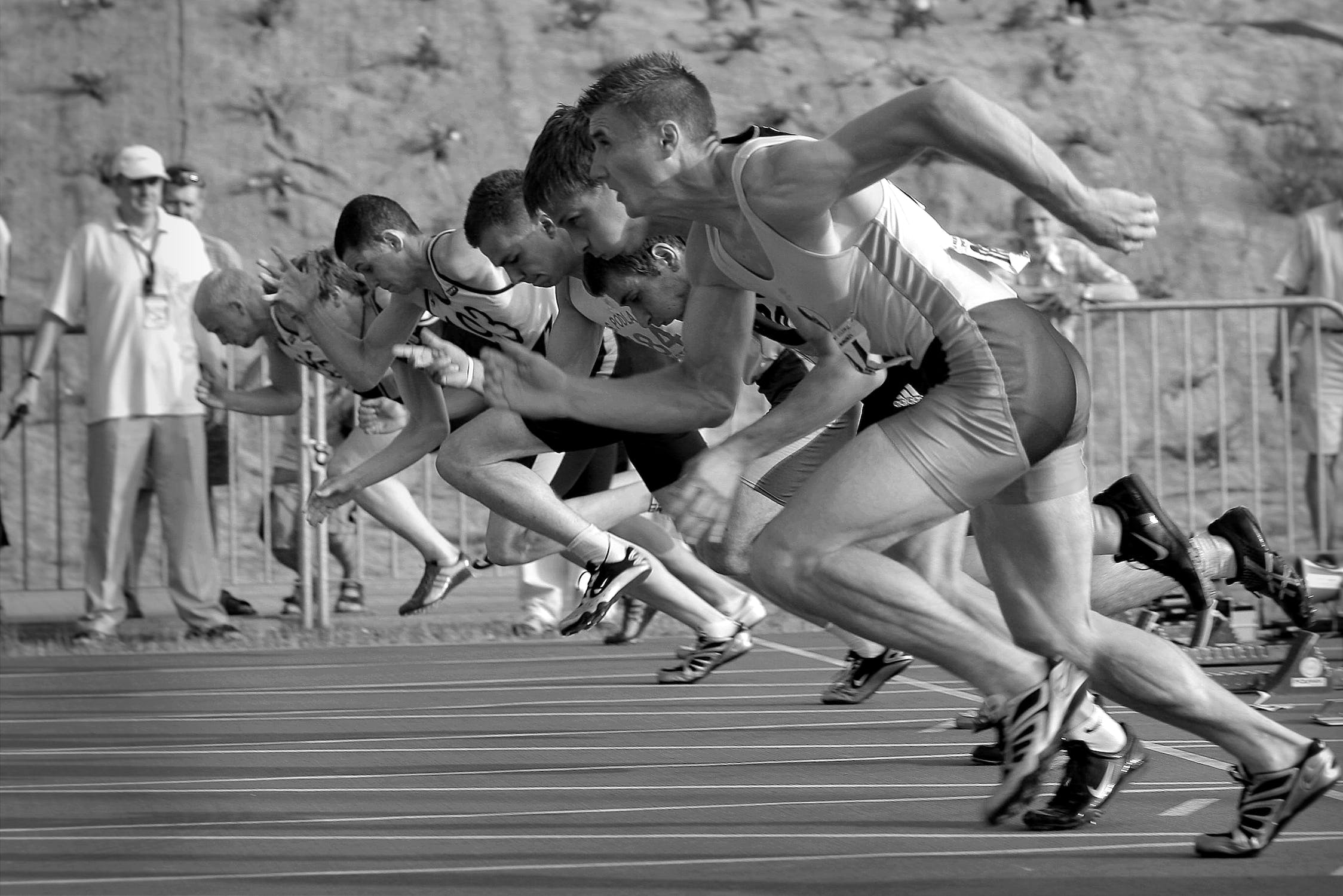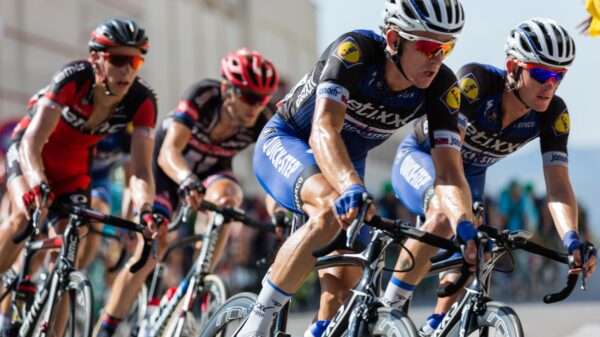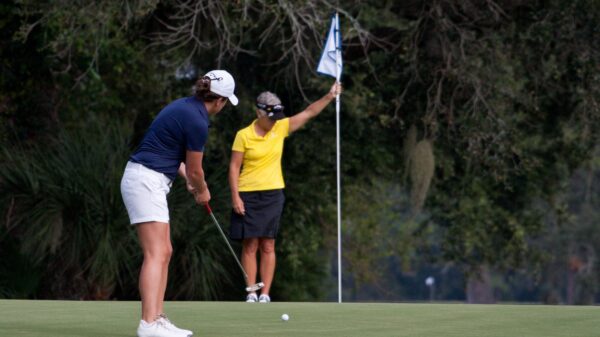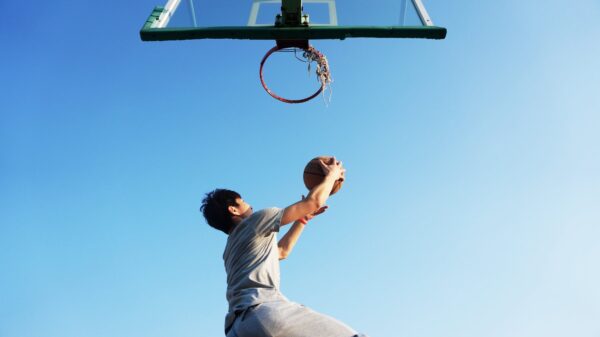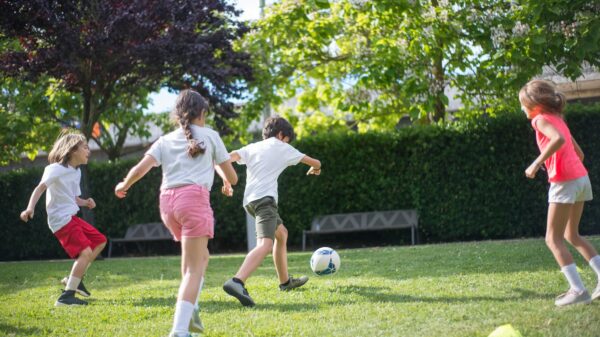Are you tired of working out for hours without seeing any significant results? Do you want to take your athletic performance to the next level but don’t know where to start? Look no further! In this blog post, we dive into the science behind training smarter, not harder. By understanding how your body works and optimizing your workouts accordingly, you can achieve better results in less time. So put down those weights and get ready to learn how to train like a pro!
Introduction to Athletic Performance Science
Athletic performance science is the study of how the body responds to and adapts to physical activity and exercise. It can encompass everything from how muscles produce energy during exercise to how psychological factors like motivation can impact performance.
This field of science has seen a lot of growth in recent years as we’ve learned more about how the body works and what we can do to optimize performance. Whether you’re a weekend warrior or a professional athlete, understanding the science of athletic performance can help you train smarter, not harder.
Here’s a quick overview of some key concepts in athletic performance science:
–The role of energy systems in exercise: Most exercise requires the use of multiple energy systems, each of which predominates at different intensities. Understanding how these energy systems work can help you tailor your training to specific goals.
–Muscle physiology: We all have different muscle types that affect our ability to generate force and power. Knowing which types of muscles are most important for your sport can help you design a training program that targets them specifically.
–Biomechanics: How your body moves during exercise is determined by the laws of mechanics. By understanding these laws, you can make small tweaks to your technique that can have a big impact on your performance.
Mental factors -: Mental factors like motivation, focus, and confidence can all play a role in athletic performance. Identifying the psychological barriers that are holding you back can help you find new ways
Basics of Athletic Training Smarter
The basic idea of training smarter is to train more effectively, not just harder. This means that you need to focus on the quality of your training sessions, not just the quantity. There are a few key things to keep in mind when trying to train smarter:
1. First, you need to make sure that you have a well-balanced training program. This means including both aerobic and anaerobic exercises, as well as strength training and flexibility work.
2. Second, you need to make sure that you are using the right intensity for each type of exercise. For aerobic exercises, this means working at a moderate pace that gets your heart rate up but doesn’t exhaust you. For anaerobic exercises, this means working at a higher intensity level where you can’t sustain the activity for very long.
3. Third, you need to focus on quality over quantity when it comes to your repetitions and sets. This means doing fewer reps with better form rather than more reps with poor form.
4. Finally, you need to focus on recovery just as much as your actual training sessions. This means getting enough sleep and eating a healthy diet so that your body can repair itself and adapt to the new stresses being placed on it.
Benefits of Athletic Training Smarter
There are many benefits to training smarter, not harder. By focusing on quality over quantity, you can reduce your risk of injury, improve your overall performance, and make the most of your time and energy.
When you train smarter, you:
– Are more likely to stick with your program
– Improve the quality of your workouts
– Reduce your risk of injury
– Improve your overall athletic performance
Components of an Effective Athletic Training Program
An effective training program has several key components. First, it must be designed specifically for the athlete’s sport and goals. Second, it must be periodized, meaning it is structured in a way that allows the athlete to make progressive gains over time. Third, it must include a balance of different types of training, such as strength, power, and endurance work. Finally, it should be monitored closely so that adjustments can be made as needed.
Strength and Conditioning Exercises for Athletic Performance
The science of athletic performance is constantly evolving, and new research is emerging all the time about how to train smarter, not harder. One area of focus in recent years has been on strength and conditioning exercises for athletic performance.
There is a lot of debate about what kind of strength and conditioning exercises are most effective for athletes. Some argue that traditional weightlifting exercises are the best way to build strength, while others say that bodyweight exercises or plyometric training are more effective.
The truth is, there is no one-size-fits-all answer to this question. It depends on the individual athlete and what their specific goals are. However, there are some general guidelines that can be followed when designing a strength and conditioning program for an athlete.
Here are some tips for designing a strength and conditioning program for an athlete:
1. Start with a thorough assessment of the athlete’s current level of fitness and skills. This will help you tailor the program specifically to their needs.
2. Set realistic goals for the athlete based on their starting point and desired outcome.
3. Incorporate a variety of different types of strength and conditioning exercises into the program so that the athlete can work on all aspects of their fitness.
4. Make sure that the exercises are progressions from simple to complex so that the athlete can gradually increase their intensity level without overdoing it.
5. Periodize the program so that there are distinct phases of
Nutrition and Fueling Strategies for Athletes
As an athlete, you know that what you eat and drink can affect your performance. You need to fuel your body with the right nutrients to give you energy and help you recover from workouts. But with so many options out there, it can be hard to know what to eat and drink.
Here are some nutrition and fueling strategies for athletes:
1. Eat a balanced diet.
You need all the major food groups to perform your best. Make sure you’re eating plenty of fruits, vegetables, whole grains, lean protein, and healthy fats.
2. Drink enough fluids.
Dehydration can negatively affect your performance. Make sure you’re drinking enough water throughout the day and during your workouts. You may also need to drink sports drinks or other electrolyte-rich beverages if you’re sweating a lot or working out for more than an hour.
3. Fuel up before exercise.
Eating a small meal or snack before exercise can give you energy and help you perform better. Try something that’s high in carbs and low in fat, such as a banana, granola bar, or piece of toast with honey. And don’t forget to drink fluids!
4. Don’t forget about recovery meals and snacks.
After exercise, it’s important to refuel your body with the right nutrients to help repair muscle tissue and replenish glycogen stores (your body’s source of energy). A recovery meal should include both carbs
Rest and Recovery Strategies for Athletes
Just as important as training is for athletes, rest and recovery are crucial to performance. Over-training can lead to injuries, burnout, and decreased performance. That’s why it’s important to have a solid plan for both training and recovery.
Here are some strategies that can help athletes recover from workouts and stay healthy:
1. Get enough sleep: Sleep is when the body recovers from physical activity and adapts to the stresses of training. Most adults need 7-8 hours of sleep per night, but athletes may need more.
2 Eating Healthy Foods . : Eating healthy foods helps the body repair muscles, replenish energy stores, and reduce inflammation.
3. Use active recovery: Active recovery involves light exercise or stretching after a workout to help the body flush out toxins and reduce soreness.
4. Take ice baths: Ice baths can help reduce swelling and inflammation after intense workouts.
5. Get massages: Massages can help release tight muscles, improve range of motion, and promote relaxation.
Mental Strategies for Athletic Performance
When it comes to athletic performance, the mind is just as important as the body. Mental strategies can help athletes train smarter, not harder.
Here are some mental strategies that can help improve athletic performance:
1. Visualize success: See yourself achieving your goals in your mind’s eye. This will help increase your motivation and confidence.
2. Set specific goals: Be clear about what you want to achieve. This will help you stay focused and on track.
3. Stay positive: Believe in yourself and your ability to succeed. This positive mindset will help you persevere through difficult times and reach your goals.
4. Be prepared
The Science of Athletic Performance: How to Train Smarter, Not Harder”
Are you tired of working out for hours without seeing any significant results? Do you want to take your athletic performance to the next level but don’t know where to start? Look no further! In this blog post, we dive into the science behind training smarter, not harder. By understanding how your body works and optimizing your workouts accordingly, you can achieve better results in less time. So put down those weights and get ready to learn how to train like a pro!
Introduction to Athletic Performance Science
Athletic performance science is the study of how the body responds to and adapts to physical activity and exercise. It can encompass everything from how muscles produce energy during exercise to how psychological factors like motivation can impact performance.
This field of science has seen a lot of growth in recent years as we’ve learned more about how the body works and what we can do to optimize performance. Whether you’re a weekend warrior or a professional athlete, understanding the science of athletic performance can help you train smarter, not harder.
Here’s a quick overview of some key concepts in athletic performance science:
–The role of energy systems in exercise: Most exercise requires the use of multiple energy systems, each of which predominates at different intensities. Understanding how these energy systems work can help you tailor your training to specific goals.
–Muscle physiology: We all have different muscle types that affect our ability to generate force and power. Knowing which types of muscles are most important for your sport can help you design a training program that targets them specifically.
–Biomechanics: How your body moves during exercise is determined by the laws of mechanics. By understanding these laws, you can make small tweaks to your technique that can have a big impact on your performance.
–Psychology: Mental factors like motivation, focus, and confidence can all play a role in athletic performance. Identifying the psychological barriers that are holding you back can help you find new ways
Basics of Training Smarter
The basic idea of training smarter is to train more effectively, not just harder. This means that you need to focus on the quality of your training sessions, not just the quantity. There are a few key things to keep in mind when trying to train smarter:
1. First, you need to make sure that you have a well-balanced training program. This means including both aerobic and anaerobic exercises, as well as strength training and flexibility work.
2. Second, you need to make sure that you are using the right intensity for each type of exercise. For aerobic exercises, this means working at a moderate pace that gets your heart rate up but doesn’t exhaust you. For anaerobic exercises, this means working at a higher intensity level where you can’t sustain the activity for very long.
3. Third, you need to focus on quality over quantity when it comes to your repetitions and sets. This means doing fewer reps with better form rather than more reps with poor form.
4. Finally, you need to focus on recovery just as much as your actual training sessions. This means getting enough sleep and eating a healthy diet so that your body can repair itself and adapt to the new stresses being placed on it.
Benefits of Training Smarter
There are many benefits to training smarter, not harder. By focusing on quality over quantity, you can reduce your risk of injury, improve your overall performance, and make the most of your time and energy.
When you train smarter, you:
– Are more likely to stick with your program
– Improve the quality of your workouts
– Reduce your risk of injury
– Improve your overall athletic performance
Components of an Effective Training Program
An effective training program has several key components. First, it must be designed specifically for the athlete’s sport and goals. Second, it must be periodized, meaning it is structured in a way that allows the athlete to make progressive gains over time. Third, it must include a balance of different types of training, such as strength, power, and endurance work. Finally, it should be monitored closely so that adjustments can be made as needed.
Strength and Conditioning Exercises for Athletic Performance
The science of athletic performance is constantly evolving, and new research is emerging all the time about how to train smarter, not harder. One area of focus in recent years has been on strength and conditioning exercises for athletic performance.
There is a lot of debate about what kind of strength and conditioning exercises are most effective for athletes. Some argue that traditional weightlifting exercises are the best way to build strength, while others say that bodyweight exercises or plyometric training are more effective.
The truth is, there is no one-size-fits-all answer to this question. It depends on the individual athlete and what their specific goals are. However, there are some general guidelines that can be followed when designing a strength and conditioning program for an athlete.
Here are some tips for designing a strength and conditioning program for an athlete:
1. Start with a thorough assessment of the athlete’s current level of fitness and skills. This will help you tailor the program specifically to their needs.
2. Set realistic goals for the athlete based on their starting point and desired outcome.
3. Incorporate a variety of different types of strength and conditioning exercises into the program so that the athlete can work on all aspects of their fitness.
4. Make sure that the exercises are progressions from simple to complex so that the athlete can gradually increase their intensity level without overdoing it.
5. Periodize the program so that there are distinct phases of
Nutrition and Fueling Strategies for Athletes
As an athlete, you know that what you eat and drink can affect your performance. You need to fuel your body with the right nutrients to give you energy and help you recover from workouts. But with so many options out there, it can be hard to know what to eat and drink.
Here are some nutrition and fueling strategies for athletes:
1. Eat a balanced diet.
You need all the major food groups to perform your best. Make sure you’re eating plenty of fruits, vegetables, whole grains, lean protein, and healthy fats.
2. Drink enough fluids.
Dehydration can negatively affect your performance. Make sure you’re drinking enough water throughout the day and during your workouts. You may also need to drink sports drinks or other electrolyte-rich beverages if you’re sweating a lot or working out for more than an hour.
3. Fuel up before exercise.
Eating a small meal or snack before exercise can give you energy and help you perform better. Try something that’s high in carbs and low in fat, such as a banana, granola bar, or piece of toast with honey. And don’t forget to drink fluids!
4. Don’t forget about recovery meals and snacks.
After exercise, it’s important to refuel your body with the right nutrients to help repair muscle tissue and replenish glycogen stores (your body’s source of energy). A recovery meal should include both carbs
Rest and Recovery Strategies for Athletes
Just as important as training is for athletes, rest and recovery are crucial to performance. Over-training can lead to injuries, burnout, and decreased performance. That’s why it’s important to have a solid plan for both training and recovery.
Here are some strategies that can help athletes recover from workouts and stay healthy:
1. Get enough sleep: Sleep is when the body recovers from physical activity and adapts to the stresses of training. Most adults need 7-8 hours of sleep per night, but athletes may need more.
2. Eat a nutritious diet: Eating healthy foods helps the body repair muscles, replenish energy stores, and reduce inflammation.
3. Use active recovery: Active recovery involves light exercise or stretching after a workout to help the body flush out toxins and reduce soreness.
4. Take ice baths: Ice baths can help reduce swelling and inflammation after intense workouts.
5. Get massages: Massages can help release tight muscles, improve range of motion, and promote relaxation.
Mental Strategies for Athletic Performance
When it comes to athletic performance, the mind is just as important as the body. Mental strategies can help athletes train smarter, not harder.
Here are some mental strategies that can help improve athletic performance:
1. Visualize success: See yourself achieving your goals in your mind’s eye. This will help increase your motivation and confidence.
2. Set specific goals: Be clear about what you want to achieve. This will help you stay focused and on track.
3. Stay positive: Believe in yourself and your ability to succeed. This positive mindset will help you persevere through difficult times and reach your goals.
4. Be prepared: Plan ahead and know what you need to do to succeed. This will reduce stress and help you stay focused on the task at hand.
5. Take action: Put your plans into action and take consistent action towards your goals. This will help you make progress and ultimately achieve success
Tracking Progress and Evaluating Results
It is important to track progress and evaluate results when trying to improve athletic performance. There are many different ways to do this, but some common methods include things like time trials, heart rate monitors, and GPS devices.
Time trials are a great way to track progress over time and see if you are actually improving. They can be done on your own or with a group of people. Heart rate monitors are another great way to track progress. They can help you see how hard you are working and how your body is responding to the training. GPS devices can also be very helpful in tracking progress and evaluating results. They can show you how far you have gone, how fast you were going, and what kind of terrain you were on.
Tracking Progress and Evaluating Results
It is important to track progress and evaluate results when trying to improve athletic performance. There are many different ways to do this, but some common methods include things like time trials, heart rate monitors, and GPS devices.
Time trials are a great way to track progress over time and see if you are actually improving. They can be done on your own or with a group of people. Heart rate monitors are another great way to track progress. They can help you see how hard you are working and how your body is responding to the training. GPS devices can also be very helpful in tracking progress and evaluating results. They can show you how far you have gone, how fast you were going, and what kind of terrain you were on.
Conclusion
Overall, the science of athletic performance gives us a great insight into how to best optimize our training and maximize our potential. By understanding the principles behind human physiology, we can make informed decisions on how to get the most out of our workouts and be more productive with less effort. With the right approach and attitude, anyone can unlock their true athletic potential!
